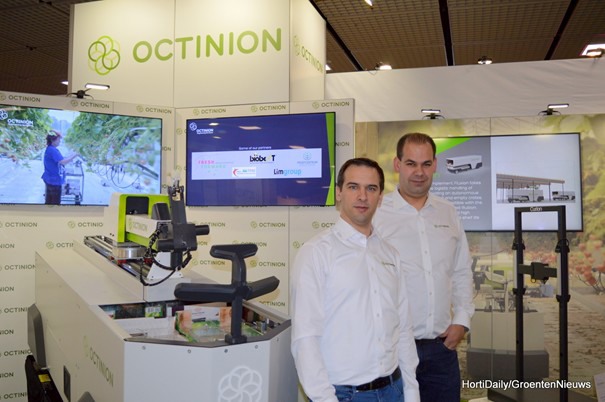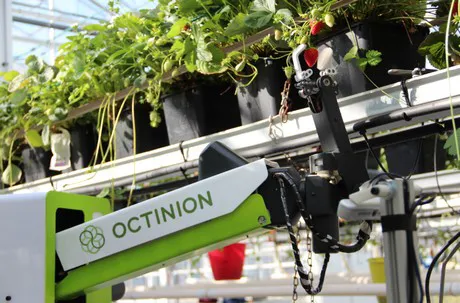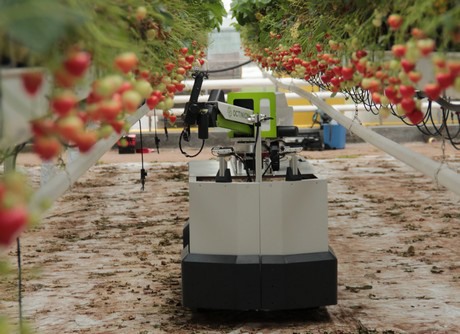All over the world, people are working on harvesting robots, but there wasn’t yet a robot for harvesting strawberries. After the Fruit Logistica last week, that robot has arrived on the market, because Belgian company Octinion presented the Rubion, a completely autonomous harvesting robot that can take over a lot of work from the grower in combination with other complementary robots. “The robot currently picks a strawberry every five seconds, so that it’s competitive with people,” says Tom Coen, CEO of the Octinion Technology Group.

The company, founded nearly ten years ago, worked on the development of the robot for five years. In 2016 and 2017, prototypes were tested. But why only for strawberries? Tom: “Strawberries are one of the most standardised crops. There’s a reason 90 per cent of all harvesting robot developers are working on the harvest of strawberries or apples. The only disadvantage of apples is that they don’t have year-round production, so that the machine has to be very well-developed to be profitable upon introduction. Strawberries can be grown year-round, so that the investment pays itself off faster.”

Patented fruit approach from below
According to Tom, some developers are working on tomato or kiwi. “However, tomatoes have more different varieties with different sizes and shapes, making it difficult to develop a robot for that production. High wire cucumbers would be another option, but that market is still relatively limited.” What about bell peppers, for which a harvesting robot is also in development? “In our opinion, bell pepper as a variety isn’t ready for robotised harvesting, but we’re keeping an eye on everything, and in the coming years we’ll also develop harvesting solutions for other productions.”

But first strawberries, for which Rubion can pick 10 to 30 kilos per hour, depending on variety. It’s remarkable that the robot approaches the strawberries from below to pick them, while the stem remains on the plant. According to Tom, the robot is faster because of this, because localising the right stem costs a lot of time. This unique method has now been patented.
The strawberries are then sorted and packed by the harvesting robot, after which an accompanying robot supplies and removes the crates. Besides, Octinion offers a harvest forecaster and a robot with UV light to combat mildew.
No venture capital
All of this has been developed without venture capital, Tom proudly says. “We’re a first generation family company. It’s often difficult to convince investors to make an investment in multiple robots at once, and that’s exactly what we did. We offer a total solution, and all of our robots can drive on both tubular rails, on cement and on grass among or below the crop.”
Lead
As far as Tom knows, his company is the first to offer a similar robotisation solution to strawberry growers. Isn’t he worried about the dialectics of progress? “No, on the contrary. I think it’s crucial to have a lead in this. Only by testing commercially will you get validated test results needed to continue developing. I think that’s why there are no ‘secret’ projects, because as soon as you want to test something in practice, it will become known. We’re also getting a lot of feedback from our customers, including various seed improvers who can now also work on better varieties for the robot harvest. They’re also familiar with the other solutions, and they tell us we’re in the lead.
For now, 2019 is a year of pilots, for a large Dutch grower, among others, which will be revealed by Octinion later. The cost price of the robot is in line with the costs of human pickers, according to the developers. “But it isn’t just about sales. Supplying service is also important to us, because to make it successful, we’ll profit both as a seller and as an eventual buyer from a robot that can harvest 24-7.”
For more information:
Octinion
www.octinion.com
info@octinion.com
+32 16 38 73 12
Tom Coen
sales@octinion.com
